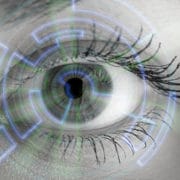LASIK for Higher vs. Lower Order Vision Aberrations
Most common vision problems are classified as refractive errors. Normally, your cornea should bend light so that it focuses in the center of your retina. If you struggle with refractive errors, the unusual shape of your cornea will cause light to focus elsewhere inside your eye. As a result, you may experience blurred vision, double vision, glares, or many other symptoms. There are actually two main categories of refractive errors: higher order and lower order aberrations. LASIK can be a highly successful treatment for lower order aberrations. With innovative new technology, it can often be a good option for higher order aberrations, as well. Our team will evaluate your needs and visual acuity. Then your doctor can determine the most effective way to restore your sight. To learn more about higher vs. lower order aberrations, contact our Springfield, MA practice today.
What Are Lower Order Aberrations?
Lower order aberrations are very common, affecting millions of patients. There are three types of lower order aberrations:
- Nearsightedness: If you suffer from nearsightedness, or myopia, light will focus in front of your retina. As a result, you will be able to nearby objects clearly. However, objects at a distance will appear blurry. Note that nearsightedness is different from age-related presbyopia.
- Farsightedness: Farsightedness, or hyperopia, is less common. With this condition, light will focus behind your retina. You will be able to see far away objects, but you will need reading glasses for anything close up.
- Astigmatism: Astigmatism will cause light to focus in multiple places in your eye. Without corrective lenses, objects at all distances will appear blurry.
What Are Higher Order Aberrations?
Like lower order aberrations, higher order aberrations develop when your eye cannot refract light properly. Often, these aberrations are the result of corneal irregularity. In other cases, they can develop because of scarring, eye trauma, and unusually large pupils. While lower order aberrations produce certain telltale symptoms, higher order aberrations can have a range of effects. These may include:
- Blurred or double vision
- Difficulty with night vision or problems in low-light conditions
- Glare and/or halos
- Ghost images
- Starbursts in your visual field
Can LASIK Treat Both Higher and Lower Order Aberrations?
LASIK is suitable for most patients with lower order vision aberrations. If you choose this treatment, Dr. Papale or one of the members of his team will create a thin flap in the surface of your cornea. Then, using an advanced excimer laser, he will reshape these tissues. After surgery, your eye will be able to focus light correctly, and it will land in the center of your retina.
Thanks to the advent of WaveFront technology, LASIK is now suitable for many types of higher order aberrations. With the Wavelight Allegretto Wave® Excimer Laser System, the laser will be precisely calibrated to your eye. Dr. Papale will also adjust the laser to match your cornea, using extra bursts of energy to compensate for its irregular shape.
Contact Us to Find Out if LASIK Is Right for You
Although LASIK is now appropriate for a wider range of patients, it is not suitable for everyone. At your free consultation, your doctor can determine whether laser eye surgery may be right for you. Contact our office today to book your appointment.

